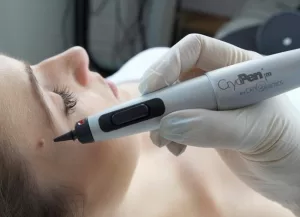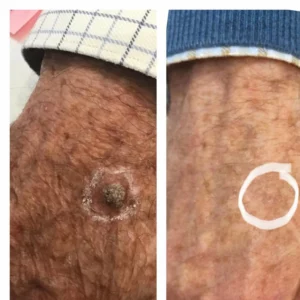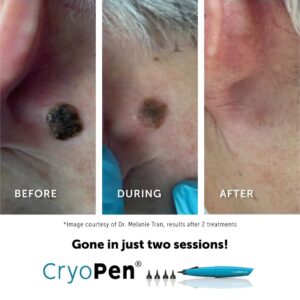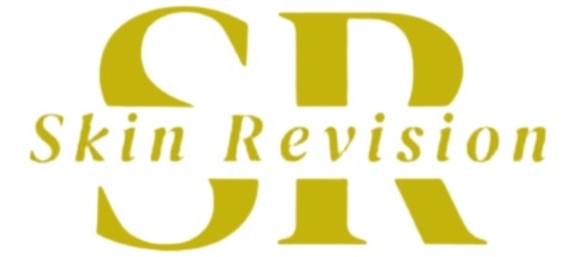How to prevent and treat Age Spots
Small, flat, dark spots on the skin are known as age spots. They come in a variety of sizes and typically develop on the face, hands, shoulders, and arms. This is because typically those areas are exposed to the sun.
Sunspots, liver spots, and solar lentigines are further names for age spots.
Age spots are fairly frequent in those over 50, but they can also appear on the younger generation, who spend time in the sun.
Age spots might resemble malignant growths. True age spots don’t necessarily require treatment and it would be regarded as a cosmetic treatment should the individual decide to want treatment for these lesions (if they are benign).
They are a symptom of extensive sun exposure and your skin’s defence mechanism against further UV damage.
What are the symptoms of Age Spots?
All skin types are susceptible to age spots. For whiter skin tones the age spots will show up as either flat light to dark marks and for darket skin tones the spots maybe in greater numbers and commonly much smaller in size. Black skin types in particular can show a small or large number of the smaller black age spots, especially around the eyes. Age spots do not vanish, in contrast to freckles, which are frequent in children and can disappear when not exposed to sunlight.
Age spots appear on skin that has been exposed to the sun the most over time, such as the backs of hands, tops of feet, faces, shoulders, and upper back. They are flat, oval patches of enhanced pigmentation that are often tan to very dark brown.
Freckles or age spots can be very small or as large as 13 millimetres wide. They can often cluster together to be more conspicuous.

Should I see a doctor for Age Spots or Freckles?
Age spots don’t need medical attention. However, if you are unsure about the development of a lesion or mark, then it would be prudent to ask your doctor to examine any patches that are dark or that seem to have changed. Melanoma, a dangerous type of skin cancer, may be indicated by these changes.
It’s recommended to see a doctor to have any new skin changes examined, especially if the change is dark, growing in size, has an uneven border, or has an uncommon combination of colours.
What are the causes of Age Spots?
Pigment cells that are hyperactive are what produces age spots. In order to give skin its colour, melanin, a natural pigment, is produced more quickly in response to ultraviolet (UV) light. Age spots develop on skin that has been exposed to the sun for a long time when melanin gathers or is created in large quantities.
Age spots might also result from using tanning beds and lamps for business.
What contributes to getting Age Spots?
These factors are contributory to developing age spots in your later years:
- Genetics
- Have a history of sunburn or frequent or strong sun exposure
How can I avoid getting Age Spots?
Take the following precautions to reduce your exposure to the sun to help prevent age spots and new spots after a specific treatment:
- From April to September especially, between the hours of 11am and 4pm, try and shade yourself from the sun as much as possible. Try to plan outdoor activities during other times of the day because this is when the sun is most powerful.
- Apply a broad-spectrum sunscreen with a sun protection factor (SPF) of at least 30 prior to going outside. Re-apply sunscreen every two hours, or more frequently if you’re swimming or perspiring. Apply sunscreen liberally.
- Wear tightly woven clothing that covers your arms and legs and a broad-brimmed hat to protect yourself from the sun. These items offer more coverage than a baseball cap or golf visor.

Where can Age Spots be treated?
The best place to get Age Spots and assessed is with a dermatologist or advanced skincare professional. If you live in Buckinghamshire, Berkshire or west Hertfordshire, one of the best skin clinics to attend for your age spots, brown spots or liver spots, is Skin Revision in Beaconsfield.
What Age Spot treatments are available at the Skin Clinic in Buckinghamshire?
The most successful treatment for age spots, or liver spots or brown spots is CryoPen. CryoPen is an advanced medical Cryotherapy procedure which freezes at -89 degrees Celsius. The temperature will vary, depending on the type of age spot or keratosis. The freezing temperatures freeze the skin cells that have formed the age spots / skin lesions. The age spots will not disappear immediately, and may take up to 3 months or further treatments for the natural pigmentation to disappear.

Another treatment for age spots, liver spots, brown spots or actinic keratosis could be Plaxel Plasma. The plasma pen treatment has the same effect as cryotherapy but uses heat cauterisation. The gases that produce the plasma are directly sprayed onto the Age Spots or keratosis and kills off the skin cells causing the skin condition.
For any prospective treatment for Age Spots, a telephone consultation and a sent photo, is often enough for a small number of Age Spots. However, if there are a larger number on various parts of the body, then a face to face consultation is required.
If you have Age Spots or marks / lesions that are appearing more readily, and wish to discuss treatment options, do give Skin Revision a call or visit their website on www.skinrevision.uk

